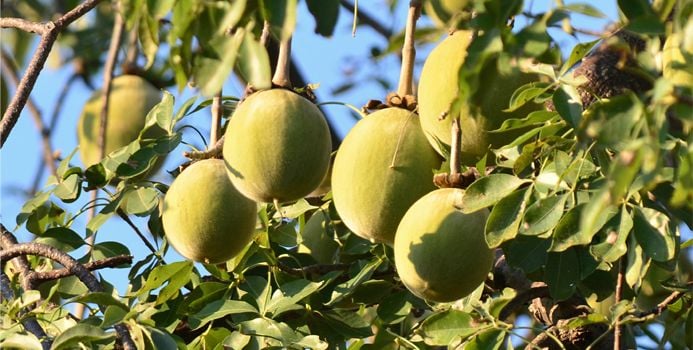While living in Malawi and backpacking around sub-Saharan Africa, I had the opportunity to try many different foods that are not commonly available in the U.S. Living in a very rural village required hours of bicycle taxis, mini buses and hitchhiking to reach the nearest store, and thus greatly limited the available food choices and the variety. The majority of people live in very dry and dusty areas where most food was grown by the 90 percent of Malawians who live as subsistence farmers. Without refrigeration, daily trips are essential to the local market for seasonally available foods. One of the most defining characteristics of diets in Africa is that they are based on a staple food. Most African countries consume staple foods like rice or plantains with every meal. In Malawi, the staple food is maize. In the US, we focus on getting a variety of foods, in part due to our access and cultural diversity. In addition to staple foods, you could purchase many popular foods available are not yet commonly found in the U.S, but expect to see some of these at the grocery stores in the near future!
Baobab Fruit
This fruit has more antioxidants than any other superfruit (including pomegranate, blueberries or açai). It grows on the baobab tree and is a good source of fiber, iron, magnesium, vitamin C, potassium and calcium! Its hard "nut-like" shell opens to tart seeds covered in powder, sweet-and-sour, fibrous, dried fruit.
Insects
Insects are a huge part of the diet of Malawians because they are so plentiful and do not require any inputs and minimal labor to "harvest" or prepare them. I frequently went out with my neighbor children to capture locusts or grasshoppers. The children would rip the legs and wings off and then bite into them or take them home to be simmered in a tomato sauce. In an attempt to make bugs more appetizing to typical Western appetites, friends would include dried flying termites in sushi rolls to add a nutty-flavored crunch. Many cultures consume insects for health benefits besides the low inputs required. Grasshoppers and locusts have 14-18g of protein/100g of fresh weight. Termites have 13-28g of protein/100g! Beef rates only at about 19-26g/100g uncooked and fish like tilapia have 16-19g/100g.
Jackfruit
One popular food is jackfruit, an enormous fruit that looks a bit like putty-textured pineapple on the inside, with a banana-like flavor. Despite its nutrient density and propensity to thrive in difficult climates, this food was often under-consumed. It is high in protein, potassium, vitamin B and a good source of vitamin C. It has 95 calories per half a cup, and is a good source of fiber. Jackfruits can be dried, roasted, added to soups and made into chips, jams and juices. Even the seeds can be boiled, roasted or ground into flour.
Moringa
Moringa is going to be the next big superfood to come to America. The moringa tree grows in difficult climates and is so nutrient-dense that it being researched and used to address the high rates of malnutrition experienced in the community. Both dried and fresh leaves contain a substantial amount of magnesium, iron, folate, and vitamins B-6, A, C, and E. They are also a moderately good source of calcium, niacin, protein and dietary fiber. A one cup serving of fresh, raw leaves is one of the best sources of nutrients including vitamin C and iron. Moringa has more iron than spinach (4 mg vs 2.7mg in spinach), more potassium than a banana (337-461 mg vs 422 mg per banana) and more vitamin C than an orange (51.7-141 mg vs 69.7 mg per orange) per 100g of moringa according to USDA National Nutrient database.
The Velvet Bean
This was street food that I consumed almost daily due to it being extremely inexpensive and available on almost every roadside. This bean had quite the folklore because it is poisonous unless cooked for many hours. Malawian history tells the tale of an invading tribe who ate the bean because they saw people of the other tribe eating it. The invading tribe did not cook the beans long enough and died! This legume is high in proteins, carbohydrates, amino acids, fatty acids, fiber and minerals. It is being researched as a potentially nutritious food to combat Parkinson’s disease due to the high levels of Levodopa found in the bean. The flavor and texture is almost of mashed potatoes and is a good source of protein (24-30%). But be sure to cook it properly!
Emily DeLacey MS, RD is a Registered Dietitian and currently working in Jamaica as a HIV/ AIDS Prevention Specialist. She attended Central Washington University for her Bachelor's Degree in Science and Dietetics and continued on after her internship to Kent State University for her Master's Degree in Science and Nutrition, with a focus on public health and advocacy. She served as a U.S. Peace Corps Volunteer in Malawi 2012-2014 working as a Community Health Advisor in a rural village, immersing in the joys of life without electricity or running water. She has been to 20+ countries and 47 of the 50 states in the US. Traveling, adventuring and experiencing new cultures has made her a passionate advocate for the equality of nutrition and wellness for all people.



